Apple's iPhone 4: Thoroughly Reviewed
by Brian Klug & Anand Lal Shimpi on June 30, 2010 4:06 AM EST- Posted in
- Smartphones
- Apple
- iPhone 4
- Gadgets
- Mobile
Screen - Retina Display
Right out of the box, the iPhone 4's new 326 PPI, 960x640, 3.5" display is arguably the single most striking change the new iPhone brings. In a word, it's dazzling. Text and high res images look amazingly sharp on the iPhone 4’s retina display. It’s an improvement over the 800 x 480 AMOLED screens that have been shipping on most Android phones. But if you’re comparing it to an iPhone 3GS the difference is huge.
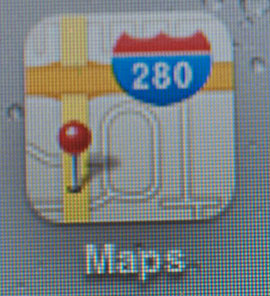 |
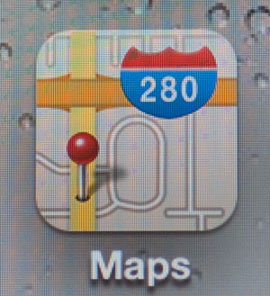 |
|
iPhone 3GS
|
iPhone 4
|

Text on the Google Nexus One

Text on the iPhone 4
The dot pitch is truly remarkable, so much so that Apple makes the claim that their display outresolves the human eye; its advertised ability to do so has earned it a new Apple tradename, "retina display."
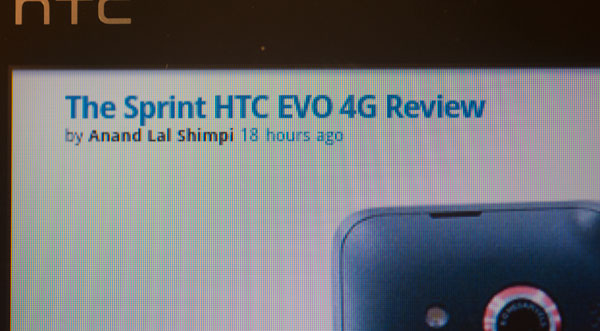
Text on the HTC EVO 4
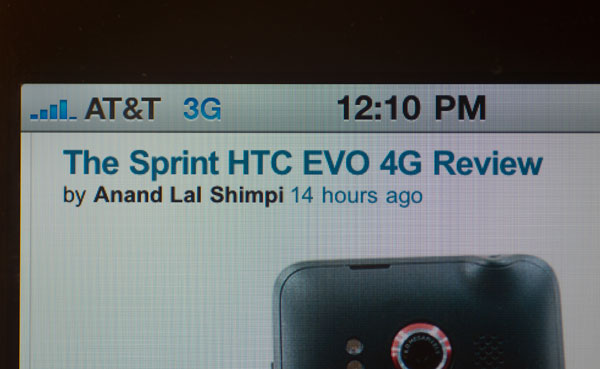
Text on the iPhone 4

AnandTech Logo on the EVO 4G

AnandTech Logo on the iPhone 4
Immediately after hearing Apple's claim that the Retina Display outresolves the human eye, I snapped into optics mode and crunched the numbers, and tweeted that the results were valid.
In the days that followed, there was considerable debate about the validity of Apple's claims. However, nearly all of the debate really just hinged on a debate over angular resolution of the human eye, and a little more over viewing distance. They're both entirely conventions.
As you've probably discovered by now, the human eye resolution can really only be characterized in angular subtense. Hold something closer to your eye, and you can see smaller features better (in theory), move it further away, and you can't make out small spatial details. The minimum angle visible with the human eye is the angle at which features (for the most common definition, a black and white square wave) stop being visible, and are indistinguishable from each other.
Most measures of visual acuity test with this implicitly - the Snellen eye chart's use of the capital "E" is literally a perfect example, which has given rise to a "tumbling E" eye chart. At twenty feet, the capital E subtends 5 minutes of arc, and conveniently has five half cycles of white to black (from top to bottom). So 20/20 implicitly implies an angular resolution of 1 arcminute (1/60 degrees).
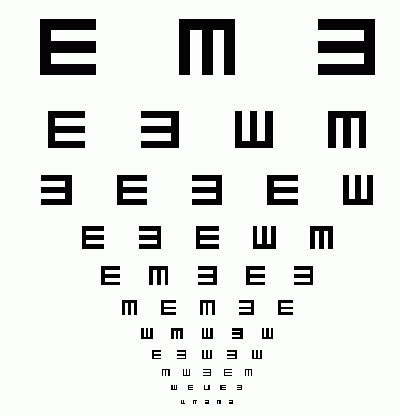
As an Optical Sciences and Engineering undergrad, I've had 1 arcminute drilled into my head more times than I can count as being the "normal" angular resolution of the human eye system. In practice, this is 20/20 vision, which is "normal," yet not perhaps the absolute maximum for human perfection. We can play games of course and argue that a small subset of the population has better than normal uncorrected vision, and thus an angular resolution of below 1 arcminute. I have above average uncorrected vision, which I've measured to be 20/15 on average, giving an angular resolution of approximately 0.75 arcminutes. Of course, the definitions stem from the spacing of cones in the fovea, the highest resolution part of the retina.
The other informational quantity needed to test the Retina Display claims is viewing distance. Again, there's a commonly agreed upon convention - standard viewing distance is considered to be 1 foot. This is another drilled into my brain number tossed around for comfortable viewing and reading. In practice, you can focus on objects much closer to your eye - this is called the near point and is often given as 10 inches, though as you get closer you increase strain aren't likely to keep it here.

Maybe not exactly the limit, but close enough.
Given the two most common standards tossed around, 1 arcminute and 12 inches, do the math out and you'll arrive at around 286 pixels per inch as the limit for eye resolving power, comfortably below the 326 on the Retina Display. Move to 0.75 arcminutes at 12 inches, and it's 382 pixels per inch, higher than the Retina Display. Honestly, I can't see the pixels at 12 inches.
Of course, the real story is even more complicated. Remember how the definition comes with the implicit assumption that we're dealing with a square wave pattern from white to black? That's a factor too - the contrast of the two pixels. Lower the contrast, and the eye's ability to pick out features decreases even more. So far, everything we've talked about has been first order, and without aberrations. Toss in spherical and astigmatism, two aberrations common to the eye system, and eye performance drops way more.
The human eye system is actually pretty poor, and shockingly easy to outresolve. In fact, if you saw the image your eye forms on your retina, you'd likely be appalled; it's your brain that makes the system usable. But at the end of the day, Apple's claims that the display outresolves the human eye are good enough for us.










270 Comments
View All Comments
metalev - Saturday, July 3, 2010 - link
I ploted the signal-strength-to-bars mapping for both Android and the iPhone 4 on the same axes:http://www.metalev.org/2010/07/android-vs-iphone-4...
This shows that the iPhone 4 consistently reports a higher percentage signal strength (as defined by the fraction of bars lit) than Android GSM devices at the same signal strength.
R. Johnson - Saturday, July 3, 2010 - link
I don't understand how Apple (Iphone4) can say the antenna issue is a math problem when I can sit here with all full antenna bars and then hold the phone with my left hand and get only half a bar within 15 seconds. I don't know what to trust anymore when Apple decides to use different math and different bars in an upcoming update. I am afraid they may now use different bars to have it APPEAR there is better reception than there really is.R. Johnson
SunSamurai - Saturday, July 3, 2010 - link
You better hurry and put on the tinfoil hat too.Give me a break. The article already pointed out it was a simple error in how the bars were representing signal. The actual numerical signal is actually better. They basically did the opposite of what youre freak'n out about.
navderek - Saturday, July 3, 2010 - link
@SunSamuraiPlenty of reason to freak out. This is a very obvious design flaw that has been overlooked by Apple, and now denied by Apple. I am an RF Engineer and when I watched the Apple keynote presentation of the device I almost fell off my chair when he presented the antenna design...Then I thought, no it must have a light coat of something to shield the antenna....guess not.
Apple is making profit hand over fist and paying sweatshop workers pennies to put these things together...the least they could do is provide free bumpers. No they won't though because they will open the door to legal issues...who cares, they can afford the legal costs and it would save their face and allow them to continue unscathed...Now they just look like any other greedy company out there. They've really lost there magic IMO. It's discouraging that profits > honor. They are a real good company and this will really hurt them.
StormyParis - Saturday, July 3, 2010 - link
The article is very nice, but the conclusion lets us down and not gently by falling into the fanboi worldview. I'm neither an Apple nor Android nor Palm fanboi. I recently bought an HD2, and I'm definitely NOT an MS fanboi. I just wanted the biggest possible screen, and the HD2's is 40% bigger than the iPhone's... it's not about resolution, but size: I'm getting old.If the Dell Streak had been out in my country, I'd probably have gotten it instead. If palm had a big-screen, keyboardless phone, I'd have strongly considered it, seeing that right before the HD2, I was still using my Palm TX because it just works.
Right now I wouldn't consider Apple because it's too closed, and too cumbersome to get content onto (iTunes crapped out on my PC every time I tried it). I'm not sure I could get winhttrack'ed sites onto it.
I think most phones have reached the point of "good enough". On mine, I'm using a browser, an ebook reader, a media player... and that's about it. I don't game, I don't do social web things, I don't need a fashion accessory/personality crutch...
SunSamurai - Saturday, July 3, 2010 - link
You sound bitter. Tell us where the iphone/droid touched you.btharms - Saturday, July 3, 2010 - link
My phone drops from 5 bars to 1 bar frequently. The way I comfortably hold the phone covers the black strip more often than not. I have run speed test after speed test, and what I have found is that while covering the strip, my 3g connection will drop to 0kbps! I can literaaly freeze safari while loading any web page by temporarily placing my finger on the black strip (it will continue to load a second or two after I remove my finger).I was achieving download speeds of around 1600 kilobits/sec with the phone in my hand without covering the black strip. When redoing the test while holding the phone normally (with my pinky finger covering the strip) the speed dropped as low as 0 (100 kilobits per second was the fastest). Actually, many times the test would not start until I removed my pinky from the spot. Then, after the test began I would softly place my pinky back on the strip - and instantly the speed drops near 0.
So as thorough as your testing was, realizing that the phone misrepresents signal strength is really not a pertinent issue when you consider that the 3g signal virtually dissapears immediately on contact with the black strip.
I'm basically demanding that apple comps me a free bumper or i'm returning my phone.
navderek - Saturday, July 3, 2010 - link
The main point is that by Apple redoing the math on the signal bars...it will have no effect on the issues your seeing. Bars don't man a thing. Real life means everything and if the call drops with 5 bars or zero bars it does not matter - the call still drops!THIS IS JUST A STUNT BY APPLE TO PUT THE BLAME ON THE CARRIERS...OPEN YOUR EYES PEOPLE. Once the SW update happens then people will go back to complaining about AT&T and others...just like Apple wants it.
Thing is, poeple aren't as dumb as Apple thinks. But I guess this is the most financially obvious thing for Apple to do. Shift the blame, it's not our problem!
Mike Wadner - Saturday, July 3, 2010 - link
I started reading your review and stopped immediately upon seeing this statement: Apple has real competitors in the smartphone space. Android phones have grown in features, polish and popularity. Even Palm entered the race with a competant offering, and Microsoft isn't far behind.What cave have you been in for the last year? Do you not have a F**KING clue what Microsoft just did with their phone this week - THEY ARE MILES BEHIND EVERYONE IN HARDWARE AND SOFTWARE. My 13 year old kid wouldn't even make a statement this stupid.
Microsoft is stillborn when it comes to mobile. To even consider Microsoft a worthy competitor in the smart phone area is insane.
You're credibility just went down the crapper with that statement.
navderek - Saturday, July 3, 2010 - link
Agreed...the review may be good to the laymen, but for others not so much. I highly respect Anandtech's reviews but this is really the first one I've seen where they seem to have done the review just to get some of that Apple limelight without actually asking the tough questions like why Apple went and designed the antenna like this? What is the link between this poor antenna design and the sudden sale of bumpers by Apple? hmmmmmm